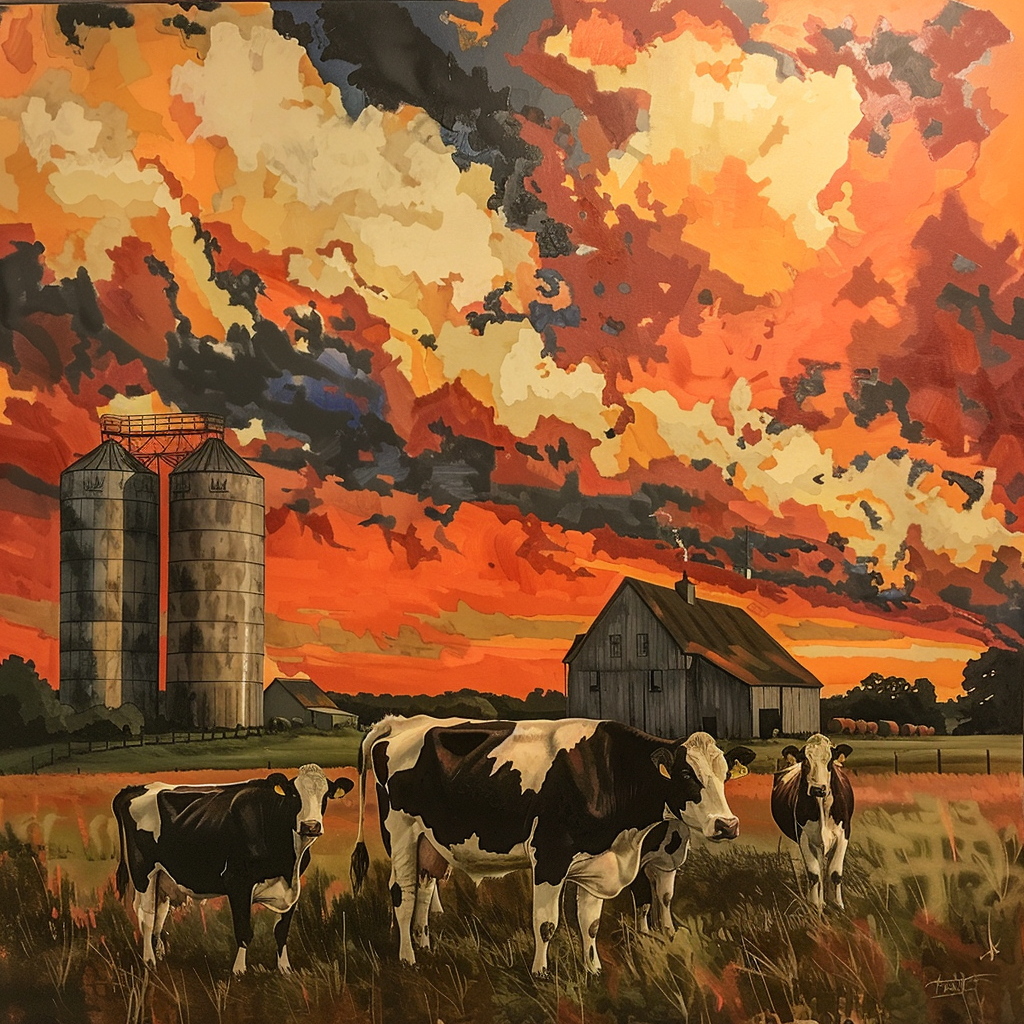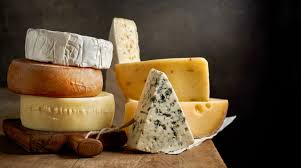How are soaring temperatures impacting dairy production and milk supply? Discover the challenges faced by farmers and the market shifts affecting your dairy products.

For America’s dairy producers, the increasingly sizzling summers are a testament to their resilience. Despite the rising heat and humidity that create severe difficulties for the dairy business, these farmers continue to persevere. The unrelenting heat may compromise cow comfort and lower milk output, but these dedicated individuals are finding ways to adapt. Their efforts, even in the face of the worst conditions in decades, are a source of inspiration. They are proving that even in this heat, cows can still produce.
Tightening of Spot Milk Availability: A Dire Shift for Dairy Processors
| Month | Average Price ($/cwt) | Year-Over-Year Change | Five-Year Average ($/cwt) |
|---|---|---|---|
| January | 21.87 | +3.5% | 19.30 |
| February | 20.75 | -2.0% | 19.60 |
| March | 22.15 | +1.8% | 19.80 |
| April | 23.05 | +4.2% | 20.00 |
| May | 24.00 | +5.1% | 20.20 |
The lack of spot milk availability is rather apparent. Dairy Market News notes a shortfall of extra shipments even during last week’s vacation. As temperatures climb and cow comfort falls, Midwest milk workers find it challenging to meet demand. Usually, there would be a surplus, but this season provides few choices. Against the five-year average of about $2.70/cwt discounts, processors seeking spot cargoes of milk now face expenses averaging 50¢ above Class III. This sudden shift draws attention to the mounting strain in the dairy sector.
Improvement in Milk Margins: A Double-Edged Sword for Dairy Farmers
| Month | Milk Margin 2023 ($/cwt) | Milk Margin 2024 ($/cwt) | Change ($/cwt) |
|---|---|---|---|
| January | $8.90 | $9.60 | +$0.70 |
| February | $8.30 | $10.10 | +$1.80 |
| March | $8.50 | $10.05 | +$1.55 |
| April | $8.75 | $9.60 | +$0.85 |
| May | $9.60 | $10.52 | +$0.92 |
Despite the better milk margins recorded by USDA’s Dairy Margin Coverage program, the financial environment for dairy farmers is not without its challenges. The Milk Margin Over Feed Cost climbed to $10.52 per hundredweight (cwt) in May, a noteworthy 92%-increase from April, the highest number since November 2022. This increase has helped dairy producers relax some of their financial load. However, various economic hurdles include high interest rates, increased borrowing costs, and limited operational investment. Further impeding development are low heifer supplies necessary for herd expansion, replenishment, and high meat costs. As such, increasing milk production presents significant difficulties even with improved profits.
Significant Decline in Dairy Powder Production: A Paradoxical Market Stability
| Month | NDM Production (Million lbs) | SMP Production (Million lbs) |
|---|---|---|
| January 2024 | 120.5 | 95.3 |
| February 2024 | 115.2 | 90.1 |
| March 2024 | 118.7 | 92.8 |
| April 2024 | 112.3 | 88.6 |
| May 2024 | 109.4 | 86.5 |
The effects on dryers have been notable; nonfat dry milk (NDM) and skim milk powder (SMP) output shows a clear drop. The industry’s difficulties were highlighted in May when the combined production of these powders dropped by 15.9% year over year. Over the first five months of 2024, NDM and SMP’s combined production fell to a decade-low. Still, NDM rates have remained highly constant, varying within a small 20′ range over the previous 17 months. Tepid demand balances the limited supply and preserves market equilibrium, providing this stability.
Volatile Dairy Export Markets Take a Hit: Mexico and Southeast Asia Push NDM and SMP Exports to Record Lows
| Month | NDM Exports (Million Pounds) | SMP Exports (Million Pounds) |
|---|---|---|
| January | 150.2 | 33.1 |
| February | 130.4 | 31.7 |
| March | 120.9 | 29.3 |
| April | 140.3 | 32.5 |
| May | 133.6 | 30.6 |
The dairy sector has been severely disrupted by the decline in NDM and SMP exports, which has been made worse by a dramatic reduction in demand from Mexico and Southeast Asia. The lowest for May since 2017, shipments of NDM and SMP dropped 24.2% year over year to barely 133.6 million pounds. The drop occurred mainly due to a notable 18.3% annual fall in sales to Mexico. Orders have also notably dropped in key markets in Southeast Asia. This crisis exposes dairy export markets’ sensitivity to trade dynamics and regional economic situations.
Butter Market Soars Amid Supply Constraints: Elevated Prices Highlight Unyielding Demand
Reflecting a robust historical figure, the butter market has maintained high prices at $3.10 per pound. Fundamental causes include:
- Limited cream supply from the summer heat.
- Growing competition from Class II users.
- An aggravating cream shortage.
Notwithstanding these limitations, May’s 4% year-over-year growth in butter output points to strong demand. These supply problems disturb the churns, yet the market needs more butter to satisfy industrial and consumer requirements.
A Tale of Two Cheeses: Italian Varieties Surge While Cheddar Falters
| Cheese Type | Production Change (Year over Year) | Key Influences |
|---|---|---|
| Italian Varieties | +4.4% | Rising Demand, Improved Margins |
| Cheddar | -9.7% | Lack of Available Supplies, Market Fluctuations |
Cheese manufacturing is undergoing a significant shift, reflecting the impact of changing consumer tastes. Italian variants like Parmesan and Mozzarella are witnessing a 4.4% spike in May, indicating the evolving market. On the other hand, Cheddar’s output is falling, plagued by declining milk supplies and growing manufacturing costs. This shift in consumer preferences is a crucial factor that the industry needs to be aware of and prepared for. As global consumers search for less expensive options, present high costs might restrict exports in the future.
Whey Markets Surge: Breaking Through the 50¢ Barrier
| Month | Price per Pound | Volume Traded (Loads) | Trend |
|---|---|---|---|
| May | 47¢ | 25 | Stable |
| June | 48.5¢ | 22 | Slight Increase |
| July | 50¢ | 30 | Increase |
| August | 51¢ | 28 | Stable |
This week, the whey markets performed well, surpassing the 50¢ per pound threshold for the first time since February. Monday’s slight decrease was followed by Tuesday’s and Thursday’s price increases. With three cargoes exchanged, dried whey prices on Friday had risen 1.75% from the previous week to 51¢ per pound. Manufacturers concentrate on value-added goods such as whey protein isolates and high protein whey protein concentrates, even if regular cheese output drives constant whey manufacturing. This change reduces dry whey output and will probably help near-term pricing.
USDA’s July Report: Sobering Projections Amid Flood-Induced Uncertainty
The July World Agricultural Supply and Demand Estimates published by the USDA provide a mixed picture of the maize and soybean output for 2024/25. Increased acreage causes estimates of corn output to rise by 1.6%, but greater use and exports lower ending stockpiles. Conversely, lower starting stocks and less acreage caused soybean output to drop by 0.3%, resulting in declining ending stocks.
While soybean meal prices held at $330 per ton, USDA shaved the average farm price prediction by 10¢ for both commodities, bringing corn to $4.30 per bushel and soybeans to $11.10 per bushel. This ought to keep feed expenses under control. However, recent extreme flooding in the Midwest, particularly along the Mississippi River, has severely disrupted crop output, possibly rendering up to one million acres of maize useless with little likelihood of replanting. These difficulties might cause feed price volatility, changing the economic environment for dairy producers and other agricultural sector players.
The Bottom Line
Modern dairy markets must contend with changing market dynamics, economic instability, and climate change. Rising heat and humidity have put cow comfort and milk output under pressure, therefore affecting spot milk supply. High borrowing rates, heifer shortage, beef pricing, and better margins all help to limit milk output. Extreme weather influences market stability and dairy output: the declining dairy powder output and butter and cheese market volatility highlight sector instability. Unpredictable availability and significant price fluctuations are resulting from supply restrictions and competition. Dampened demand from Mexico and Southeast Asia complicates matters, especially for skim milk powder and nonfat dry milk. The future of the dairy sector depends on changing consumer tastes, economic pressures, and environmental issues. To guarantee a robust and sustainable future for dairy, stakeholders must innovate for sustainability by adopting adaptive practices.
Key Takeaways:
- Milk production has declined due to high temperatures affecting cow comfort.
- Spot milk availability has tightened significantly, with handlers in the Midwest struggling to find excess loads.
- The price of spot milk is averaging 50¢ over Class III, compared to a five-year average discount of $2.70/cwt.
- US milk supply has been trailing prior year levels for almost a year on a liquid basis.
- May Milk Margin Over Feed Cost reached $10.52/cwt., the highest since November 2022.
- Despite improved margins, producer expansion is limited by high interest rates, heifer scarcity, and elevated beef prices.
- Milk supplies are tightest for dryers, with NDM/SMP production down markedly and cumulative production at its lowest in a decade.
- NDM prices have remained stable despite low production, ending the week at $1.18/lb.
Summary:
Rising heat and humidity in America have put cow comfort and milk output under pressure, affecting spot milk availability. Dairy producers are adapting to these challenges, with processors facing expenses averaging 50¢ above Class III. The Milk Margin Over Feed Cost increased by 92% in May, the highest number since November 2022. High interest rates, increased borrowing costs, and limited operational investment are also impeding development. Low heifer supplies for herd expansion and replenishment are causing difficulties. Dairy powder production has declined significantly, with nonfat dry milk (NDM) and skim milk powder (SMP) output dropping by 15.9% year over year. The volatile dairy export markets have taken a hit, with Mexico and Southeast Asia pushing NDM and SMP exports to record lows. The butter market maintains high prices at $3.10 per pound due to limited cream supply, growing competition from Class II users, and an aggravating cream shortage.












